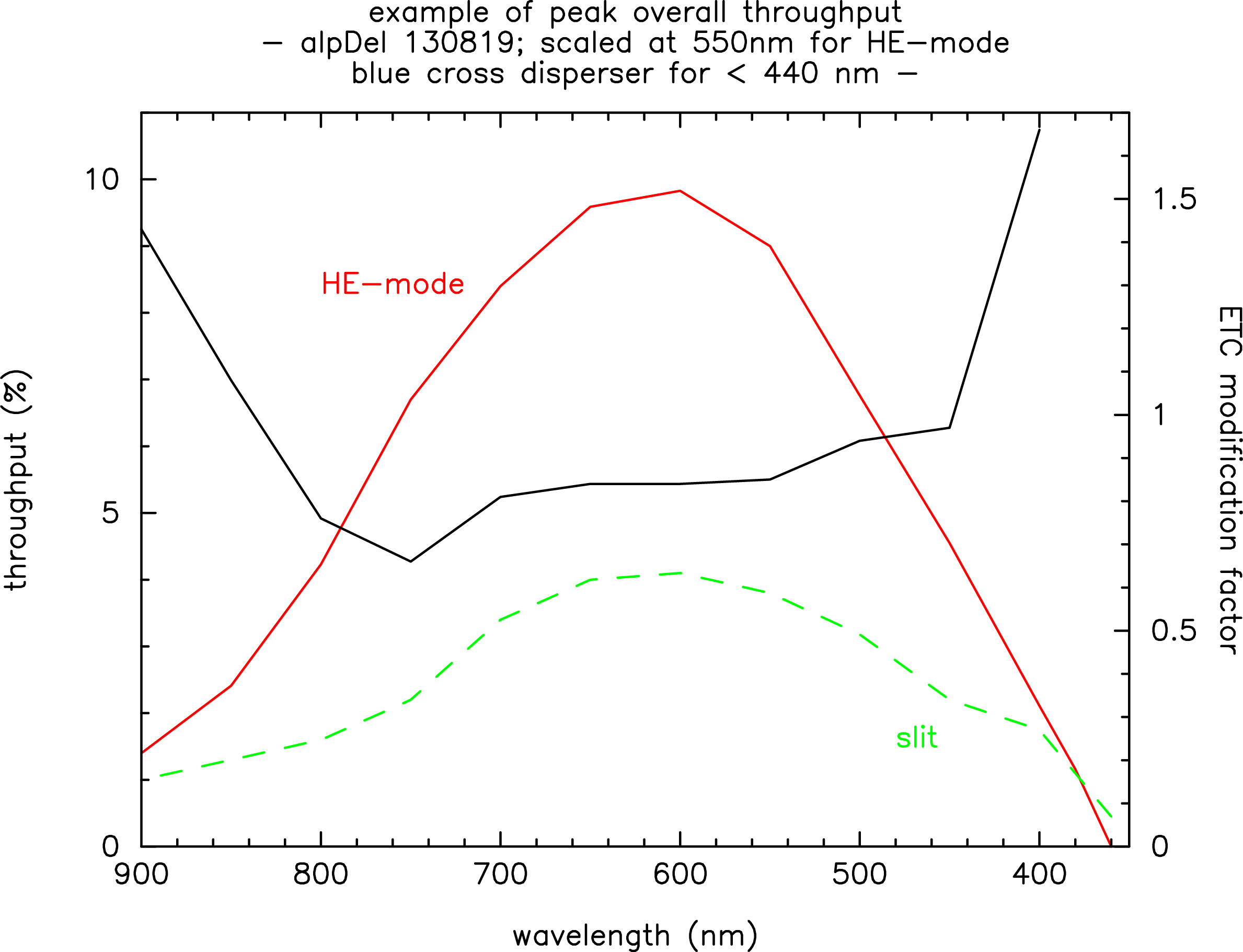for writing proposals
When writing proposals, applicants should basically refer to the “HIDES quick observing recipe” in the HIDES home page as before. But, please pay careful attention to the notes below when you plan to use our fiber-feed system.
Please also refer to our instrument developement paper for the high-efficiency mode (HE-mode), and for the high-resolution mode (HR-mode), please check our on-line material (English version) linked here.
- spectral resolution
- restrictions on the observable wavelength region
- limitation on S/N (and flat fieldening)
- throughput and estimation of the amount of observing time
- other notes
The spectral resolution is fixed to about R ~ 52,000 in HE mode and R ~ 110,000 in HR-mode.
One echeller spectrum order is sliced into three components for HE-mode (five components for HR-mode) by the image slicer, which align in the spacial direction on the CCD detector. When using the red cross disperser, intervals between adjacent two orders are already very narrow for the wavelength less than 440 nm (430 nm for HR-mode) , which makes it very difficult to correct scattered lights in such wavelength region. Thus, the wavelngth may be the practical shortest limit for the observing configuration. Also, please note that for the wavelength region shorter than 410 nm, the satellite components overlap with those of the adjacent echelle orders.
There is no wavelength restriction when observing with the blue cross disperser (see below).
Except photon noise, maximum achivable signal-to-noise ratio (S/N) of the spectrum may be limited by two factors, 1) fiber modal noise and 2) CCD fringes.
The former problem may limit the S/N of spectrum at blue and yellow wavelength regions (note that the fiber modal noise itself becomes stronger toward redder wavelength, but the CCD fringe problem overrides in such wavelength region). The modal noise may not be problematic up to the S/N of 1,500 in HE-mode (S/N of 1,000 for HR-mode) for the wavelength shorter than 700 nm, when one uses flat frames obtained with the conventional slit mode. Please contact us if you intend to take spectra with higher S/N (we are currently developing a fiber-agitator to further ease this modal-noise problem).
On the other hand, observers should carefully evaluate the CCD fringe problem for the red wavelength region, since fringe pattern differs depending on the fiber entrance (or slit) illumination patterns and when flat and stellar spectra are obtained. It may be considered that the maximum S/N for 850 nm is 200 or so.
The total exposure time can be calculated with HIDES-F Exposure Time Calculator (HIDES-F ETC) by choosing “Typical” as the atmospheric condition. If you try to observe very faint stars which can be observed only at nights with very good weather condition, please check the instrumental feasibility by HIDES-F ETC with choosing “Excellent” as the atmospheric condition.
As a reference, we plot the maximum overall throughput (red line) so far obtained with our HE-mode below. From the extensive commissioning-phase observations, it is also known that the typical throughput is (conservatively) half of the mamimum value (please see our instrument development paper).
For HR-mode, we haven’t have enough observations to quantify its throughput yet, but the best throughtput so far obtained is 4.4 % at 550 nm. In the HIDES-F ETC, we use this value as the peak thouroughput (so, it might be mo a bit conservative).

When trying to cover many spectral lines simultaneously, please pay special attention to the bad columns, as the sliced images are more extended in special direction than that of the slit mode.